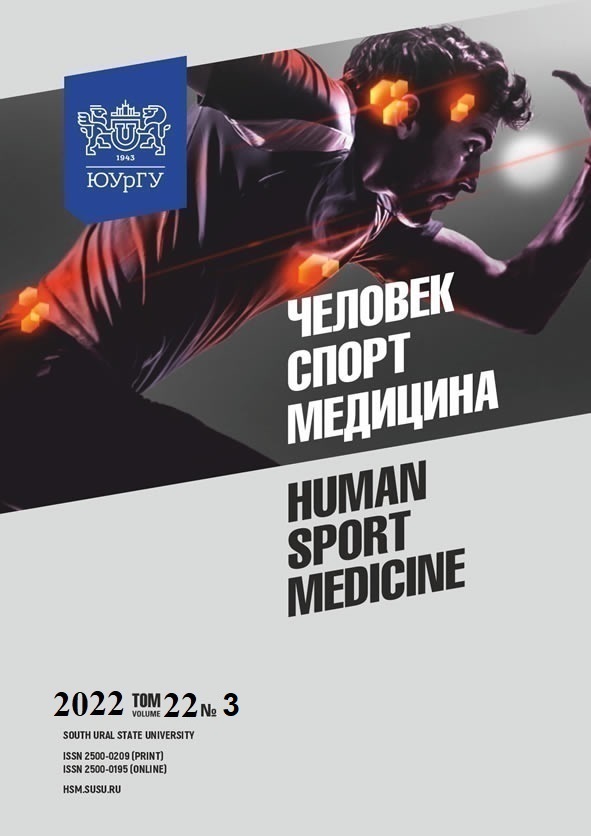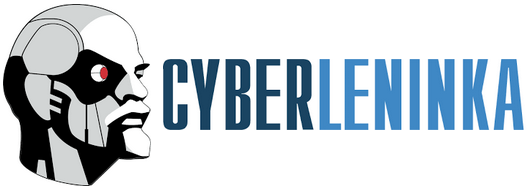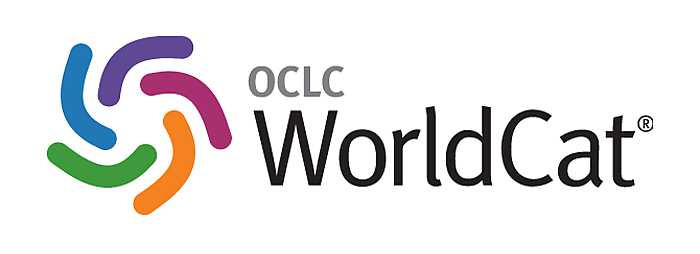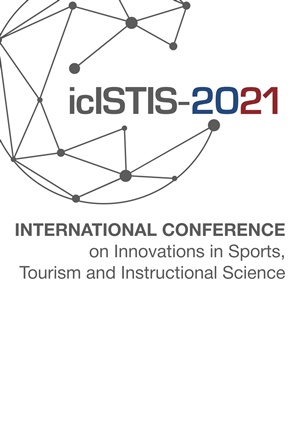АНТРОПОМЕТРИЧЕСКИЕ ХАРАКТЕРИСТИКИ ЮНОШЕЙ-СПОРТСМЕНОВ, ПРОЖИВАЮЩИХ В КАРАКАЛПАКСТАНЕ
Аннотация
Целью работы является сопоставительный анализ антропометрических параметров, характеризующих габаритные и парциальные размеры тела, ЖЕЛ, толщину КЖС и массивность костей, а также телосложение у молодых спортсменов – жителей Приаралья и их сверстников, не занимающихся спортом. Материалы и методы. В работе принял участие 161 доброволец, юноши в возрасте от 17 до 22 лет. Испытуемые были разделены на две группы: студенты биологического факультета Каракалпакского государственного университета имени Бердаха, не занимающиеся регулярно спортом, в количестве 75 человек составили «контрольную» группу. В «спортивную» группу были включены 86 студентов факультета физической культуры того же учебного заведения. Всем добровольцам проводили комплексное антропометрическое исследование по программе, включавшей 26 параметров. Сравнение значений этих показателей у испытуемых из «спортивной» и «контрольной» групп осуществляли с использованием U-критерия Манна – Уитни. Результаты. Обнаружено, что строение тела у спортсменов отличается долихоморфным телосложением, высокой массивностью костей, уплощенной грудной клеткой в сочетании с высокими значениями ее обхвата, низкой толщиной КЖС и высокой ЖЕЛ. Статистически значимых различий длины тела, голени и КЖС в нескольких анатомических областях не было обнаружено. Заключение. Полученные результаты и данные литературы свидетельствуют в пользу сходства антропометрических признаков у субъектов, проживающих в Каракалпакстане и других регионах. Высказано предположение о том, что выявленные особенности у молодых спортсменов являются результатом осознанного спортивного отбора.
Литература
2. Бакулев, С.Е. Избранные очерки о спортивной медицине / С.Е. Бакулев, О.А. Двейрина, Б.А. Поляев и др. – СПб: Изд-во Политехн. ун-та, 2002. – 224 с.
3. Бурцева, Е.В. Диагностика двигательной одаренности детей на первичном этапе спортивного отбора / Е.В. Бурцева, В.А. Бурцев, М.Н. Чапурин // Теория и практика физ. культуры. – 2020. – № 6. – С. 54.
4. Дорохов, Р.Н. Спортивная морфология: учеб. пособие для высших и средних спец. заведений физ. культуры / Р.Н. Дорохов, В.П. Губа. – М.: СпортАкадемПресс, 2002. – 236 с.
5. Негашева, М.А. Основы антропометрии: учеб. пособие / М.А. Негашева. – М.: Экон-Информ, 2017. – 216 с.
6. Саливон И.И. Способ определения типов телосложения человека по комплексу антропометрических показателей / И.И. Саливон, В.А. Мельник // Курский науч.-практ. вест-ник «Человек и его здоровье». – 2015. – № 1. – С. 93–98.
7. Bouchard, C. Overcoming barriers to progress in exercise genomics / C. Bouchard // Exercise and sport sciences reviews. – 2011. – No. 39 (4). – P. 212–217. DOI: 10.1097/JES.0b013e31822643f6
8. Eerden, B.C. Systemic and local regulation of the growth plate / B.C. van der Eerden, M. Karperien, J.M. Wit // Endocrine reviews. – 2003. – No. 24 (6). – P. 782–801. DOI: 10.1210/er.2002-0033
9. Importance of Anthropometric Characteristics in Athletic Performance from the Perspective of Bangladeshi National Level Athletes' Performance and Body Type /A. Adhikari, P. Nahida,R. N. Islam, A. Kitab. // American Journal of Sports Science and Medicine. – 2014. – Vol. 2 (4) – P. 123–127. DOI: 10.12691/ajssm-2-4-1D
10. Millward, D.J. Nutrition, infection and stunting: the roles of deficiencies of individual nutrients and foods, and of inflammation, as determinants of reduced linear growth of children / D.J. Millward // Nutrition research reviews. – 2017. –No. 30 (1). – P. 50–72. DOI: 10.1017/S0954422416000238
11. Relationships between height, arm length, and leg length on the mechanics of the conventional and high-handle hexagonal bar deadlift / R.G. Lockie, M.R. Moreno, A.J. Orjalo et al. // Journal of strength and conditioning research. – 2018. – No. 32 (11). – P. 3011–3019. DOI: 10.1519/JSC.0000000000002256
12. Selection procedures in sports: Improving predictions of athletes' future performance / R. Den Hartigh, S. Niessen, W. Frencken, R. Meijer // European journal of sport science. – 2018. – No. 18 (9). – P. 1191–1198. DOI: 10.1080/17461391.2018.1480662
13. Short and tall stature: a new paradigm emerges // J. Baron, L. Sävendah, F. De Luca et al. // Nature reviews. Endocrinology. – 2015. – No. 11 (12). – P. 735–746. DOI: 10.1038/nrendo.2015.165
14. Somatotype hormone levels and physical fitness in elite young soccer players over a two-year monitoring period / M.A. Hammami, A.B. Abderrahman, F. Rhibi et al. // Journal of sports science and medicine. – 2018. – No. 17 (3). – P. 455–464.
References
1. Yerkudov V.O., Zaslavsky D.V., Pugovkin A.P. et al. [Anthropometric Characteristics of Young Adults in Areas with Different Ecological Risks in the Aral Sea Region, Uzbekistan]. Ekologiya cheloveka [Human Ecology], 2020, no. 10, pp. 45–54. (in Russ.) DOI: 10.33396/1728-0869-2020-10-45-542. Bakulev S.E., Dveyrina O.A., Polyaev B.A. et al. Izbrannye ocherki o sportivnoy meditsine [Selected Essays on Sports Medicine]. St. Petersburg, Polytechnic University Publ., 2017. 224 p.
3. Burtseva E.V., Burtsev V.A., Chapurin M.N. [Motor Gift Diagnostics in Children at Primary Stage of Sports Selection]. Teoriya i praktika fizicheskoy kul’tury [Theory and Practice of Physical Culture], 2020, no. 6, p. 54. (in Russ.)
4. Dorohov R.N., Guba V.P. Sportivnaya morfologiya [Sports Morphology]. Moscow, SportAkademPress Publ., 2002. 236 p.
5. Negasheva M.A. Osnovy antropometrii [The Basics of Anthropometry]. Moscow, Ehkon-Inform Publ., 2017. 216 p.
6. Salivon I.I., Melnik V.A. [Method of Defining Human Constitution Type by the Complex of Anthropometric Parameters]. Kurskiy nauchno-prakticheskiy vestnik “Chelovek i ego zdorov'e” [Kursk Scientific and Practical Bulletin Man and His Health], 2015, no. 1, рр. 93–98. (in Russ.)
7. Bouchard C. Overcoming Barriers to Progress in Exercise Genomics. Exercise and Sport Sciences Reviews, 2011, no. 39 (4), pp. 212–217. DOI: 10.1097/JES.0b013e31822643f6
8. Eerden B.C., Karperien M., Wit J.M. Systemic and Local Regulation of the Growth Plate. Endocrine Reviews, 2003, no. 24 (6), pp. 782–801. DOI: 10.1210/er.2002-0033
9. Adhikari A., Nahida P., Islam R.N., Kitab A. Importance of Anthropometric Characteristics in Athletic Performance from the Perspective of Bangladeshi National Level Athletes' Performance and Body Type. American Journal of Sports Science and Medicine, 2014, vol. 2 (4), pp. 123–127. DOI: 10.12691/ajssm-2-4-1D
10. Millward D.J. Nutrition, Infection and Stunting: the Roles of Deficiencies of Individual Nutrients and Foods, and of Inflammation, as Determinants of Reduced Linear Growth of Children. Nutrition Research Reviews, 2017, vol. 30 (1), pp. 50–72. DOI: 10.1017/S0954422416000238
11. Lockie R.G., Moreno M.R., Orjalo A.J. et al. Relationships Between Height, Arm Length, and Leg Length on the Mechanics of the Conventional and High-Handle Hexagonal Bar Deadlift. Journal of Strength and Conditioning Research, 2018, no. 32 (11), pp. 3011–3019. DOI: 10.1519/JSC. 0000000000002256
12. Hartigh R.D., Niessen S., Frencken W., Meijer R. Selection Procedures in Sports: Improving Predictions of Athletes' Future Performance. European Journal of Sport Science, 2018, no. 18 (9), pp. 1191–1198. DOI: 10.1080/17461391.2018.1480662
13. Baron J., Sävendah L., De Luca F. et al. Short and Tall Stature: a New Paradigm Emerges. Nature Reviews. Endocrinology, 2015, no. 11 (12), pp. 735–746. DOI: 10.1038/nrendo.2015.165
14. Hammami M.A., Abderrahman A.B., Rhibi F. et al. Somatotype Hormone Levels and Physical Fitness in Elite Young Soccer Players Over a Two-Year Monitoring Period. Journal of Sports Science and Medicine, 2018, no. 17 (3), pp. 455–464.
Copyright (c) 2022 Человек. Спорт. Медицина

Это произведение доступно по лицензии Creative Commons «Attribution-NonCommercial-NoDerivatives» («Атрибуция — Некоммерческое использование — Без производных произведений») 4.0 Всемирная.
